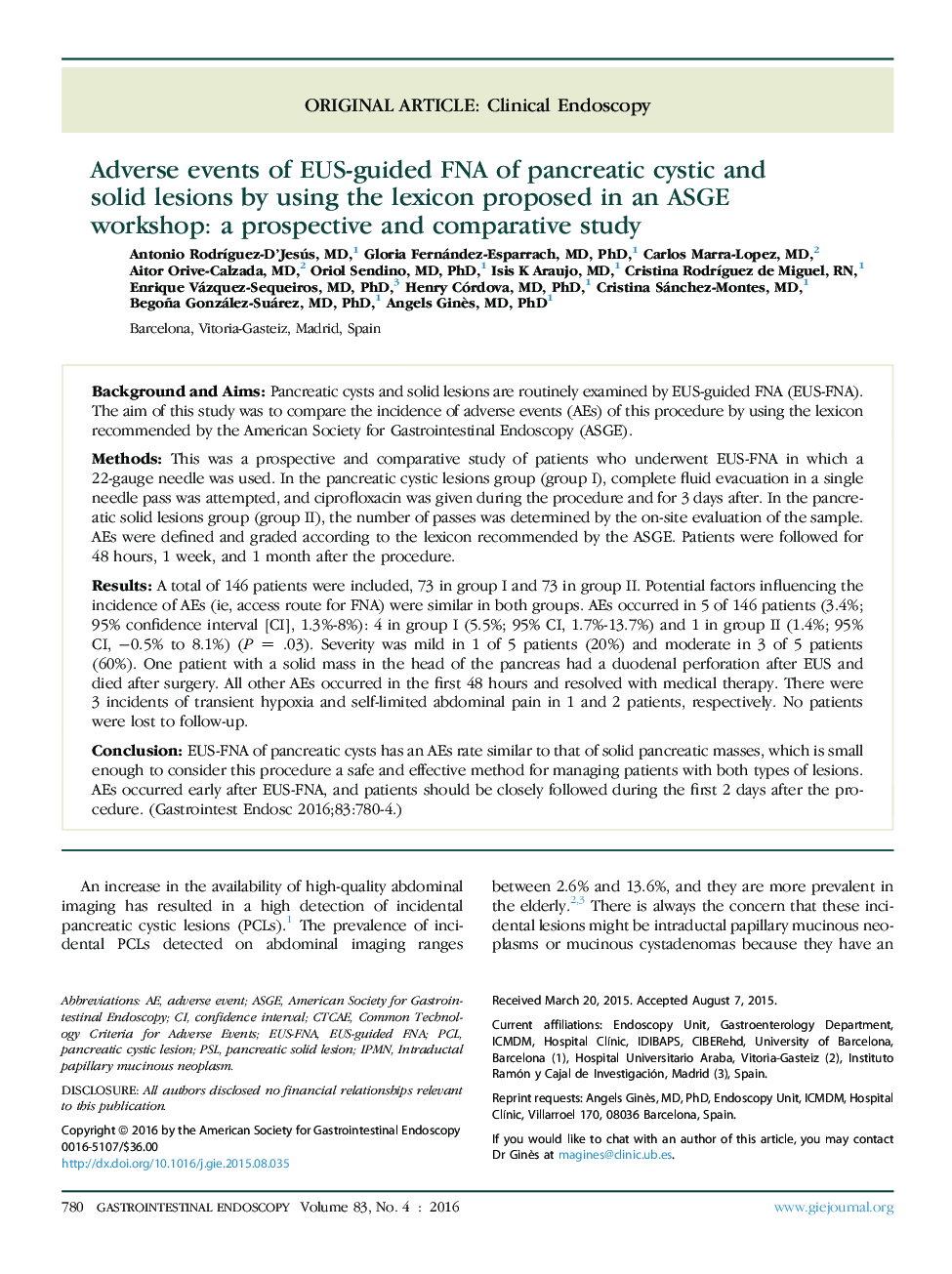| Article ID | Journal | Published Year | Pages | File Type |
|---|---|---|---|---|
| 3301720 | Gastrointestinal Endoscopy | 2016 | 5 Pages |
Background and AimsPancreatic cysts and solid lesions are routinely examined by EUS-guided FNA (EUS-FNA). The aim of this study was to compare the incidence of adverse events (AEs) of this procedure by using the lexicon recommended by the American Society for Gastrointestinal Endoscopy (ASGE).MethodsThis was a prospective and comparative study of patients who underwent EUS-FNA in which a 22-gauge needle was used. In the pancreatic cystic lesions group (group I), complete fluid evacuation in a single needle pass was attempted, and ciprofloxacin was given during the procedure and for 3 days after. In the pancreatic solid lesions group (group II), the number of passes was determined by the on-site evaluation of the sample. AEs were defined and graded according to the lexicon recommended by the ASGE. Patients were followed for 48 hours, 1 week, and 1 month after the procedure.ResultsA total of 146 patients were included, 73 in group I and 73 in group II. Potential factors influencing the incidence of AEs (ie, access route for FNA) were similar in both groups. AEs occurred in 5 of 146 patients (3.4%; 95% confidence interval [CI], 1.3%-8%): 4 in group I (5.5%; 95% CI, 1.7%-13.7%) and 1 in group II (1.4%; 95% CI, −0.5% to 8.1%) (P = .03). Severity was mild in 1 of 5 patients (20%) and moderate in 3 of 5 patients (60%). One patient with a solid mass in the head of the pancreas had a duodenal perforation after EUS and died after surgery. All other AEs occurred in the first 48 hours and resolved with medical therapy. There were 3 incidents of transient hypoxia and self-limited abdominal pain in 1 and 2 patients, respectively. No patients were lost to follow-up.ConclusionEUS-FNA of pancreatic cysts has an AEs rate similar to that of solid pancreatic masses, which is small enough to consider this procedure a safe and effective method for managing patients with both types of lesions. AEs occurred early after EUS-FNA, and patients should be closely followed during the first 2 days after the procedure.
